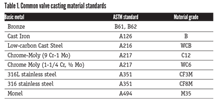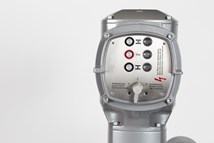Neles Expertune PlanTriage software update offers enhancements
The latest version of Neles Expertune PlantTriage software, made available in August 2021, continually monitors and diagnoses issues, helps find the root cause, prioritizes according to economic and technical factors, and provides a complete set of analysis tools to resolve the problem at its source.
#VMAnews
Edited by Margo Ellis

The latest version of Neles Expertune PlantTriage software, made available in August 2021, continually monitors and diagnoses issues, helps find the root cause, prioritizes according to economic and technical factors, and provides a complete set of analysis tools to resolve the problem at its source. The software update also includes enhanced cybersecurity, as well as new capabilities for improving sustainability, tuning control loops, and simplifying remote license management.
The latest sustainability improvements are focused on energy efficiency. The new “Energy saver” diagnostic report pinpoints controllers and valves that are contributing to loss of efficiency. The corresponding dashboard shows users how to make the improvements to save energy.
In addition, application notes have been released to help users use PlantTriage to automatically identify heat exchanger fouling and to predict when heat exchanger cleaning will be required. This not only helps with energy efficiency, but also improves reliability by allowing time to prepare for a planned shutdown.
This update also offers remote monitoring and management as a result of the pandemic making remote management of software licenses even more important. The Neles team has been actively supporting users globally, without travel, for over a year now. Also, many customers have been able to manage their software remotely, without going in to plant facilities. More information can be found on the Neles site here.
RELATED CONTENT
-
Editor's Product Picks
Neles introduces valve-sizing and selection software for all intelligent automated process valves.
-
Virtual Valve Forum and Basics Event Draws Attendees from Across the Industry
More than 200 people from across the valve industry participated virtually in the VMA Valve Forum and Valve Basics event, which included 4 days of presentations on technical, manufacturing, management and marketing, valves 101, and valve repair.
-
Valves in Oxygen Service
In his presentation at VMA’s 2017 Technical Seminar, Kurt Larson, a process control engineer for Air Products, spoke about the inherent danger of the oxygen production business and how it is particularly important for end users and valve manufacturers to work closely together.









 Unloading large gate valve.jpg;maxWidth=214)